This is a short guide to wood species that we use to make rolling pins. All details below are based on our experience. Your experience may be the same, or may differ. Just like everything in life, take this with a grain of salt.
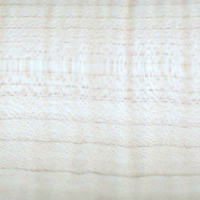
Curly Maple
While maple is a common wood in the woodworking world, curly maple has a striped pattern and is often called tiger maple, but never zebra maple. Most production places will not use it as the striping pattern varies. When you are making smaller items, such as rolling pins, curly maple is a good fit. The wood is close pored, works well, and finishes well. Sometimes there are surprises in the form of included bark and knots that can often be worked around.
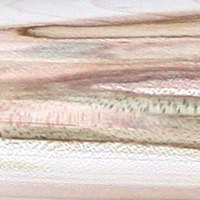
Ambrosia Maple
Ambrosia maple is really just common maple that has been attacked by the ambrosia beetle. The beetle larva growing inside the tree will leave a characteristic staining pattern, as well as holes that I used to burrow in the wood. The pattern is unpredictable and can vary from mildly interesting to gorgeous. To produce a rolling pin from ambrosia maple the holes need to be plugged and that most often happens with a food safe epoxy.

Cherry
Cherry is a classic. It is lighter in weight than maple and just a little bit of oil brings out the color. The wood is close pored, works well, and for some reason, it takes a bit more effort to sand. Sapwood, which is lighter in color, is sometimes present and adds a nice visual contrast to a rolling pin. Over the years, the rolling pin will develop the classic cherry color.

Walnut
Walnut is the high end North American wood of choice. While in the last few years demand has pushed prices up, it’s easy to see why the demand is there. This is a gorgeous wood. The wood is open pored, works well, and finishes well. Unlike most woods that darken over time, walnut turns slightly lighter with time.
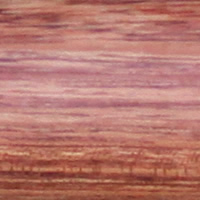
Bubinga
Bubinga is an exotic wood from Africa, often traded as African Rosewood. It is however not a true rosewood. This wood is much harder than Norther American native species. The wood is open pored, it is a bit more difficult to work, but it finishes to a very high polish. A bubinga rolling pin will have a heavy feel.
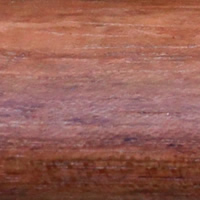
Jatoba
Jatoba (with a j like in jalapeño) is often traded as Brazilian Cherry. It is quite different from the North American cherry. This wood is much harder, and it is often used as flooring. The wood is somewhat open pored, it is a bit difficult to work, but it finished well to a high polish. A jatoba rolling pin will have a relatively heavy feel.
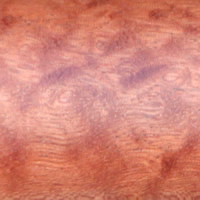
Pomelle Sapele
Well, if you are rolling in dough and you want to feel like a billion dollars while you roll that dough, say no more! Pomelle sapele is a particular grain of an already pretty wood: sapele. The photo sample here does not do the wood justice, so feel free to google search and look at the photos. There is quite a bit of variety in the grain so a rolling pin made of this wood should only ever be sold as one of a kind. The wood is light and has a feel similar to cherry. It is easy to work and finishes to an impressive look.
